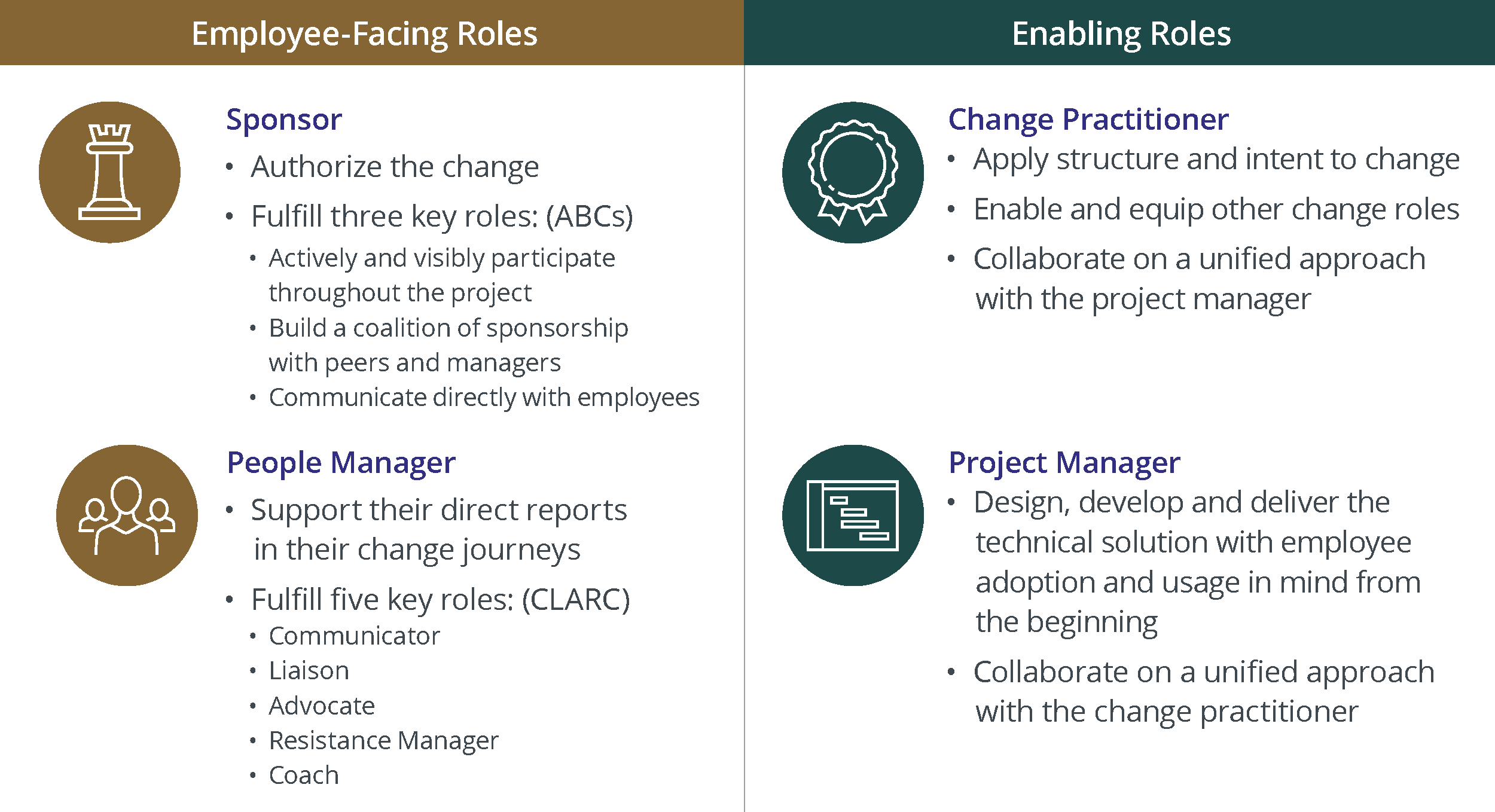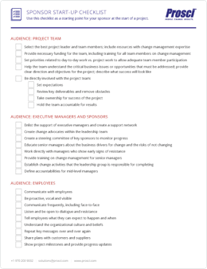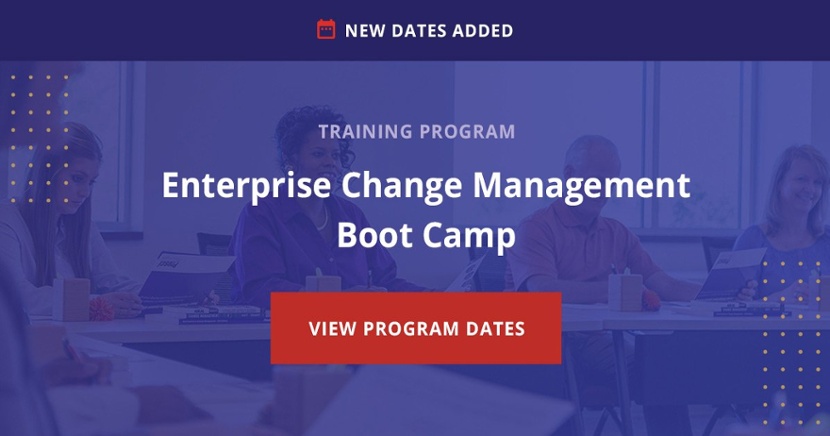Time, Effort and Success With Organizational Change

4 Mins
Updated: February 23, 2024
Published: July 29, 2020

Organizations everywhere are experiencing more change than ever, which is highlighting the need to build lasting change capability. Why? Because those who can weather more and complex change at a faster pace have a competitive advantage in our uncertain marketplace. Regardless of how small and complex or large and disruptive the changes being introduced, understanding the time and effort required to bring changes to fruition highlights the importance of being change-capable as an organization.
Time and Effort
Let’s consider two changes being introduced to an organization:
- Change #1 is reasonably disruptive. The rollout of a cloud-based, meeting collaboration tool will require employees to do much of their work in a whole new way. The tool is also available to all employees via a mobile app.
- Change #2 is less disruptive. A new expense management system will require some people to work in new ways to streamline approvals and reimbursements, and automate expense reports. However, most in the organization will only need to adopt smaller or infrequent changes. This new system will also be available via mobile app for all employees.
So, we have two different changes being rolled out at the same time into the same environment. Introducing these changes successfully requires you, as a change practitioner, to weave and tailor specific activities into the delivery plans.
For change #1, you would:
- Deliver high levels engaging activities for employees to utilize the tool through challenges, tasks, competitions, and having sponsors reschedule meetings using the collaboration tool.
And for change #2:
- Coach team members to create demonstration videos showing how easy the app is to use and the time savings they will realize compared to current approaches. Post the videos on the company intranet using the new mobile app, too.
These are basic examples. The effort required for activities you will need to undertake for your specific project or initiative becomes clear once you conduct the impact assessments and analysis.
Ready, Willing and Able
To help your organization become “ready, willing and able” to adopt changes, your people managers and executives must fulfill their unique and specific roles. This includes leading, coaching and supporting employees through the transition. And, of course, the individuals in each of these roles must be ready to adopt the changes themselves.
The effort required by these employee-facing roles is every bit as substantial as the effort required of those in change-enabling roles, such as change practitioners on the people side of change and the project managers on the technical side.

To illustrate, consider the people managers of the employees impacted by Change #1. These people managers must fulfill the five key roles of CLARC. Because this change is more disruptive in nature, their effort is more time-consuming and involved:
- Communicator – Begin communicating through the new collaboration tool. For example, schedule team meetings, conduct one-on-ones using the mobile app when on the go, and leverage the chat functions for discussions. Send alerts, upload documents, and record videos to demonstrate the recording functionality.
- Liaison – Provide team members feedback to the project and change team regarding tool utilization experiences.
- Advocate – Demonstrate support for this tool in words and action.
- Resistance Manager – Support team members who may be struggling to embrace and use the tool by listening, asking questions, providing suggestions, offering extra training, and conducting team and individual tasks.
- Coach – Ensure successful transition to the future state by offering ongoing encouragement, recognition and guided support throughout the implementation.
This all takes place as the project manager works with the change practitioner to implement the collaboration tool by ensuring all employees are engaged and supported (enabled by Change Management) and informed (enabled by Project Management) throughout the rollout.
At the same time, the people managers must fulfill the roles of CLARC for Change #2, the less disruptive change:
- Communicator – Understand why your teams or individual employees need to utilize the new expense management system.
- Liaison – Provide team member feedback to the project and change team about required compliance and user adoption.
- Advocate – Demonstrate support for this tool in words and action.
- Resistance Manager – Support team members who may be struggling to use the tool to ensure that reimbursements and purchases are processed correctly.
- Coach – Support transition to the future state by offering ongoing encouragement, compliance and recognition, along with guidance to maintain accuracy.
Meanwhile, the change practitioner supports the people-facing managers and supervisors to ensure that all identified impacted employees who will be using the expense management system are engaged.
It’s important to note here that, as the changes progress, change practitioners also work with executive sponsors to support their efforts to execute their unique responsibilities. We call these responsibilities the ABC’s of Sponsorship: Actively and visibly participate in the change, Build a coalition of sponsorship, and Communicate support and promote the change.

Need to help your sponsor understand the specific activities required for each audience and project phase in a change? Download our Sponsor Start-Up Checklist.
Remember, change practitioners are change enablers who orchestrate change from behind the scenes. When it comes to managing change, the change practitioner’s role is to enable people managers and executive sponsors, who execute their specific roles and responsibilities to lead people on the front lines through change.
What does this mean in terms of time and effort? The more change capable your people-facing roles are in executing their own responsibilities, the more change practitioners can leverage their specific skills to advance the change. The less capable their people-facing roles are, the more effort the change enablers must exert to upskill them during the change—while also executing their other responsibilities.
Overall, lower change capability in your organization means more time and effort will be diverted from change practitioners and project teams during a change.
Investing in Change Capability
Applying a holistic approach to building long-lasting change capability includes leveraging a structured approach and toolset across the organization, and building change competency in executives, leaders and front-line employees. The investment is worthwhile. Our research shows that projects with excellent change management are 93% more likely to meet or exceed objectives.
Other benefits include:
- Employees speaking a common language for change
- Leaders embracing and leading change more effectively
- Employees increasing speed of adoption
- Practitioners minimizing resistance early and throughout the change
- Solutions reaching optimal financial performance
- Projects and improvements finishing on time and on budget
- Organizations increasing speed and agility with a competitive edge
Make Change a Competitive Advantage
If you invest in building change capability in your organization, employees will embrace changes more quickly—regardless of how complex, how many, how large and how disruptive they are. The greater the skills and capability of people-facing roles, the less effort required from a delivery perspective. Over time, your organization can lower costs because you rely progressively less on external trainers and consultants. Eventually, you can make change a competitive advantage for your organization.
Did you find this blog helpful? If so, someone else might benefit from it too. Please share it!



